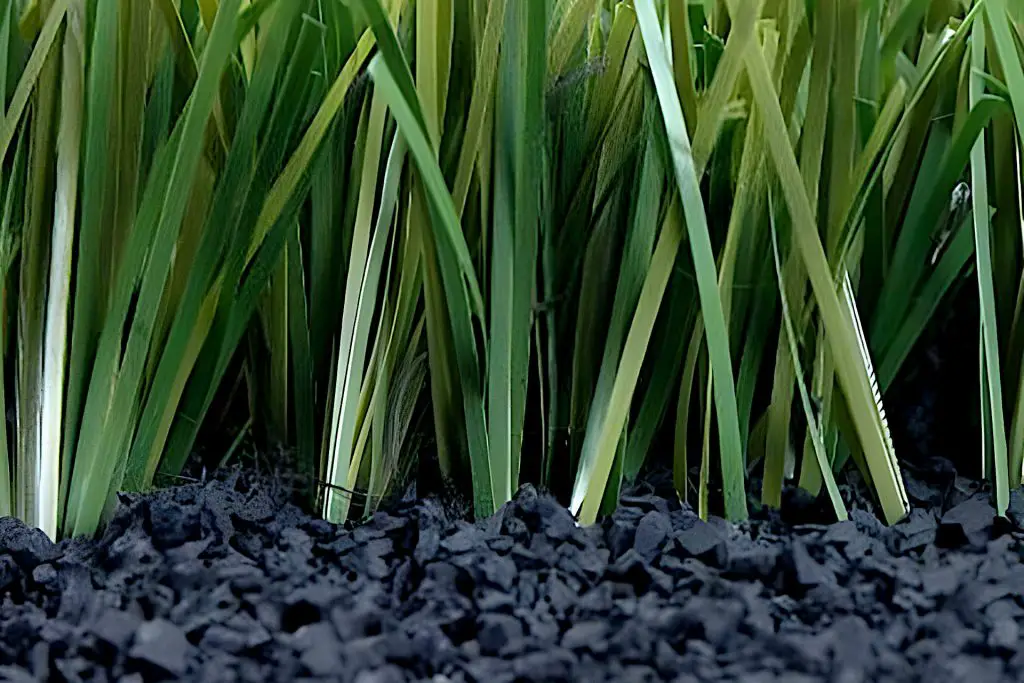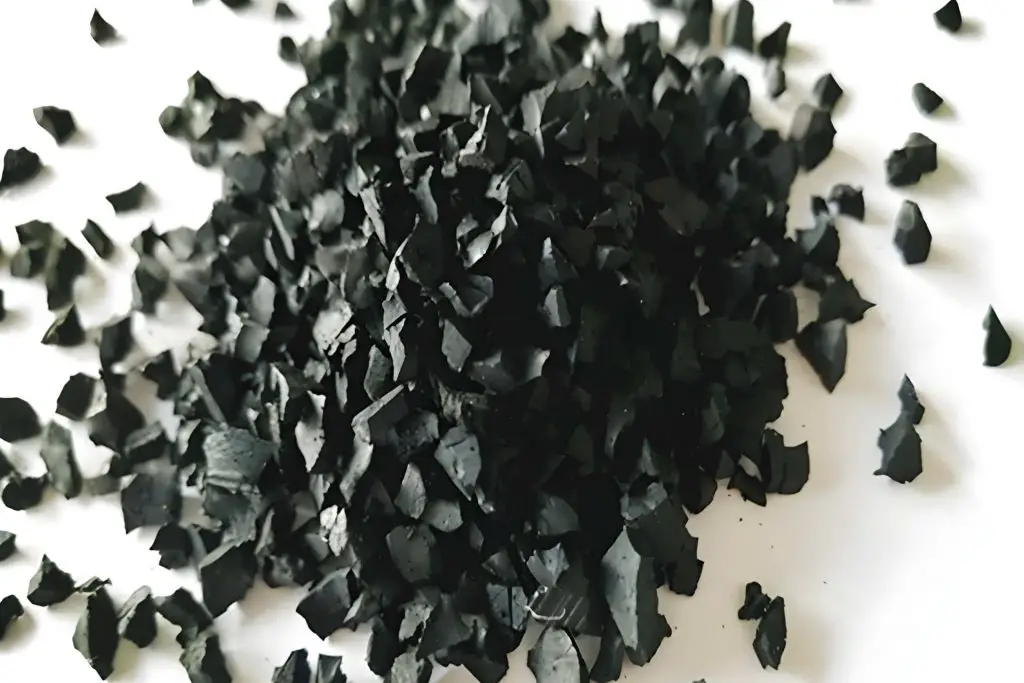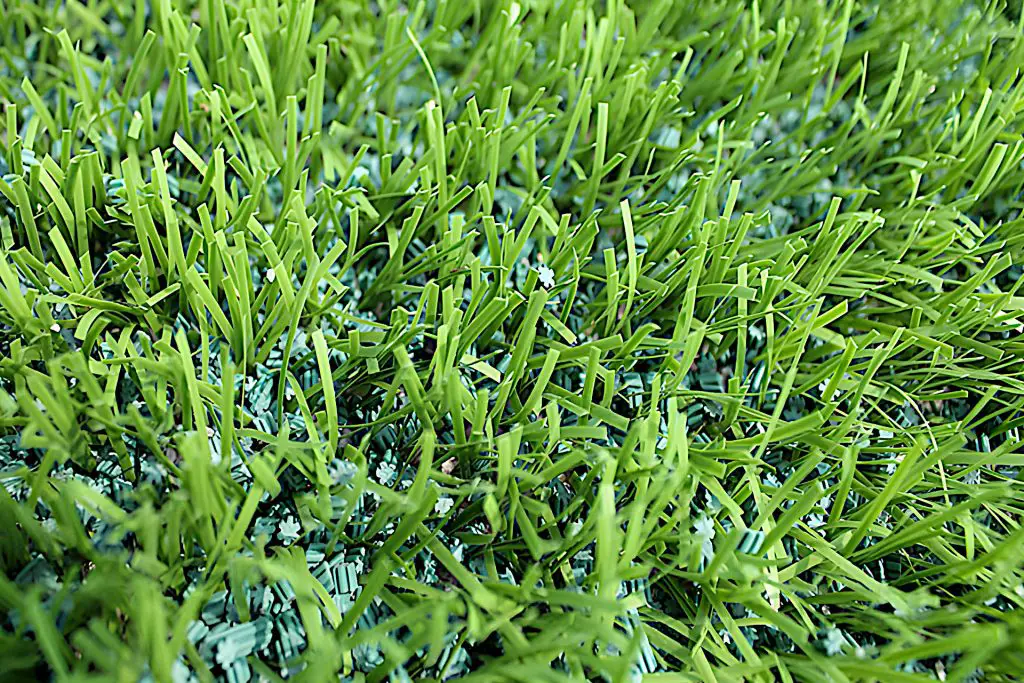Why Does Turf Have Rubber Pellets: Rubber Pellets Artificial Turf
There are many reasons for the growth in the use of artificial turf. Much of its increase in use is down to the reduced amount of maintenance that it requires as opposed to having natural grass. It requires no fertilizer or pesticides and has great aesthetics all year round, permanently looking like a perfectly cultivated lawn.
In order for the artificial turf to look and feel great, it needs the addition of an infill that will hold the grass blades in an upright position and in provide a feel underfoot that is similar to that of grass.
Rubber pellets are one of the most common types of infill for artificial turf surfaces. This is especially the case if the turf is going to be used for sports or in a playground environment. There are several types of rubber pellets available although some rubber pellet infill has come under scrutiny for possible health issues it might cause.
What Is the Function of Rubber Pellets in Synthetic Turf

The use of rubber pellets that are used on artificial turf serves a number of functions. These functions range from the aesthetics and stability of an artificial turf installation to the feel, performance, and safety of the surface.
The need for Infill on Artificial Turf
Infills are generally necessary for all synthetic grass surfaces. Most artificial turf is made up of synthetic grass fibers sewn into a mat/carpet with some turfs also having a shorter pile thatch woven into the mat.
Unlike natural grass, synthetic grass fibers have no built-in ability to right themselves into a vertical position when pressure is applied (walked on). The flattening of the synthetic grass blades not only draws away from the aesthetic look of the turf but can cause the synthetic fibers to matt affecting the longevity of the turf.
The rubber pellets allow the structure of the artificial turf remains intact by forcing the synthetic fiber blades to revert to an upright position when pressed down. This means the visual aesthetic remains intact, allowing the turf to look good all the time.
Why Rubber Pellets as Opposed to Other Infill Types
There are various types of infill available, made from multiple substances from silica, and volcanic rock to organic materials. However, probably the most commonly used option is rubber pellets.
The reason that rubber pellets are so popular comes down to two factors, use case and price. Despite the rise in the number of residential installations, the most significant demand for artificial turf is still for sports fields or public spaces in terms of the volume of artificial turf used.
Preventing Athletic and Playground Injuries
In both sports and public spaces, such as playgrounds or schools, there is a heavy emphasis on safety. While silica and some other forms of infill have great aesthetic properties and are useful for domestic needs, sports fields and playgrounds involve athletic activity and play, which means types of infill, like silica, considerably enhance the chance of abrasion injuries.
Rubber pellets are spongy and have no sharp edges. They provide a firm, but slightly springy surface, that is particularly suitable for sports. Artificial turf that is infilled with rubber pellets provides an even surface that is consistent across the whole field, which often means better playing conditions than even natural grass can offer.
Indeed, there has been a move by a number of professional sports teams to go over to artificial turf. The Arizona Diamondbacks because of the difficulty of maintaining a natural grass pitch in the summer months and the Texas Rangers chose artificial turf for their new stadium are just two examples.
Advances in artificial technology and progress in the development of rubber pellets, which help the surface behave more like natural grass, have made synthetic grass an increasingly attractive option for sports. The rubber pellet and artificial turf combinations’ ability to cushion falls make it great for public spaces too.
Various Rubber Pellet Options

When it comes to choosing rubber pellets for artificial grass infill there are now a considerable number of options to choose from. From crumb rubber to various virgin polymers that have been developed to provide additional cooling properties to artificial turf, the choice is now wider than ever.
Crumb Rubber SBR rubber
Crumb rubber is one of the most popular choices as an artificial turf infill material. It consists of black crumbs that are made from styrene-butadiene rubber (SBR) which is derived from recycling vehicle tires. Tires are made from natural and synthetic rubber, as well as a variety of chemical additives such as sulfur, zinc, black carbon, and polycyclic aromatic hydrocarbons (PAHs).
Crumb rubber is chosen because of its soft, bouncy, and nonabrasive properties, and it is frequently used for sports fields as a result of these properties. The infill adds cushion and support, reducing major injuries. It is also one of the least expensive options available.
A lot of development has gone into developing better infills from crumb rubber. Technologies such as T°Cool™ have provided the infill with cooling properties that help keep the surface temperature of artificial turf down.
Over time, the rubber begins to disintegrate, releasing black dust that can easily be transferred to shoes, sneakers, and clothing while in use.
Nike Grind
Nike Grind infill is similar to crumb rubber in that is produced from a recycled rubber product, in this case, the soles of sneakers. The main advantage that it has over crumb rubber is that its rubber element is a known quantity. The factories that produce Nike products all over the world collect the scraps of rubber and plastic that are left over after the production process. These scraps are then recycled into granules and other products.
As such, the chemical makeup of the rubber is fully established, whereas with crumb rubber it is not, because of the nature of the tire industry and where used tires originated from. This material is already deemed safe and free from excesses of any hazardous chemicals.
In terms of performance, it provides similar cushion and support that crumb rubber does and it doesn’t tend to leave the same black dust on clothing.
Virgin Polymer
Virgin polymers are quite analogous to crumb rubber, yet without the problems that come along with the latter. EPDM and TPE are the two primary kinds that are utilized for artificial grass infill. These infills are designed to be used solely for sports playing fields and are available in a variety of colors and patterns.
Because virgin polymers are made from fresh components rather than recycled ones, it has the advantage of being more effective while also containing less potentially dangerous substances.
As with recycled rubber infills they are non-abrasive, soft, and give a level of spring that makes them excellent for the sports fields they are designed to work on. However, given their significantly higher price, particularly compared to that of crumb rubber, its application is typically restricted to those of a professional nature.
Thermoplastic elastomer (TPE)
Is composed of plastic pellets which have the feel of rubber and the additional advantage of being recyclable. This infill is said to be non-toxic and available in a range of colors.
Ethylene propylene diene monomer (EPDM)
EPDM is a synthetic rubber that has been used largely for construction and hardware items such as in garden hoses, roofing, and sealing joints but has demonstrated itself to be heat and oxidation-resistant.
The EPDM pellets are considered a high-quality product without the negative market connotations associated with recycled rubber infills. However, these benefits it brings also come with a considerable price tag.
Safety Issues: Health Concerns around the safety of Rubber Pellets

One of the principal reasons that rubber pellets are chosen for use on artificial turf is to do with reducing abrasive injuries. However, recently, a number of other health concerns have emerged from the use of these pellets, particularly in a sporting environment.
There have been claims that rubber pellets can be easily ingestible and that this can result in serious health issues and even cancer.
The Synthetic Turf Council, a non-profit trade group that represents some in the artificial turf industry has conducted fourteen studies into possible negative health effects associated with synthetic grass and infill. None of these studies has yet to find and link between ill health and these products.
This of course doesn’t mean to say there aren’t any. The fact that crumb rubber can contain toxic substances such as lead and benzene is concerning in itself. For those sports where players’ faces come into regular contact with the surface, ingestion is certainly possible. Whether it is in enough quantities to cause concern though as yet to be conclusively established with scientific opinion divided on the matter.
Summary: Why Does Turf Have Rubber Pellets?
Rubber pellet infill plays an important role in the aesthetic and structural nature of artificial turf at the same time improving the performance and consistency of the turf, whilst protecting athletes and children from abrasive injuries.
There are now a variety of choices when it comes to choosing an infill for artificial turf with a number of different options for rubber pellets prevalent. From recycled materials to virgin polymers, there is a type of rubber pellet available for most applications and budgets and with technology such as T°Cool™ enhancing their properties they are likely to remain firmly in demand
There is however a dark cloud in terms of possible health issues, that hangs above the use of certain types of rubber pellets as infill. As artificial turf is no longer just the preserve of sporting venues, with domestic use growing rapidly over the last twenty years, some of these issues might begin to haunt its use.
